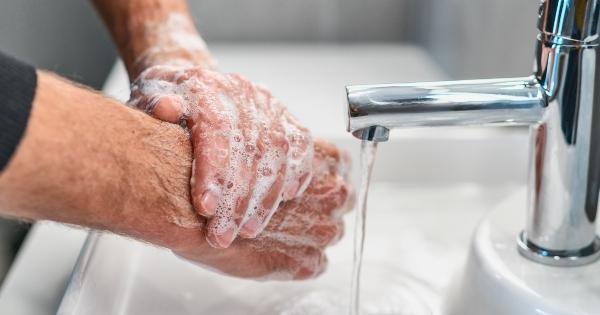Preparing for the Coronavirus

By Lauren White, RCS Reporter.
Understanding why we have a worldwide pandemic, how the virus spreads, and precautions to take for yourself and your employees.
Broadway shows, Mt. Everest expeditions, NCAA men’s and women’s Division I basketball tournaments, St. Patrick’s Day parades, and numerous other events and competitions, all cancelled to help stop the spread of the novel coronavirus, known as COVID-19. State governors are closing schools for the remainder of March, Disneyland closed its doors for the fourth time in its history, and tough decisions are being made about the 2020 Tokyo Olympics. And more cases of COVID-19 are reported every day, worldwide.
According to the Centers for Disease Control and Prevention (CDC) on January 30, 2020, the International Health Regulations Emergency Committee of the World Health Organization (WHO) declared the outbreak a “public health emergency of international concern.” And on March 11, 2020 WHO publicly identified COVID-19 as a pandemic.
According to Johns Hopkins Medicine, the first cases of COVID-19 appeared in Wuhan, a city in China, in December 2019. The exact source of the coronavirus is still being traced by health officials, though it is thought to have originated at the Huanan Market, which sells meats, poultry and fish, as well as live reptiles and wild game that are considered delicacies in China. A few people who had visited the market developed viral pneumonia, which was caused by the coronavirus.
Since initial cases were detected, as this is written, the coronavirus has spread to more than 162 countries, with over 181,000 confirmed cases, and more than 7,000 deaths worldwide. More cases are being reported daily. The first case in the United States was identified in Washington state on January 21, and as this is written there are over 5,000 cases in the US. According to the New York Times, “Among the people in the United States who have died from coronavirus, almost all have been in their 70s, 80s, or 90s. The youngest known fatality was a man in his 40s.”
The novel coronavirus spreads very easily, especially in confined spaces, such as nursing homes, churches, and cruise ships, among others. “It is much more contagious than SARS, another coronavirus that circulated in China in 2003 and sickened about 8,000 people,” as reported by the New York Times. This pathogen is able to travel through the air via respiratory droplets produced when a sick person breathes, talks, coughs, or sneezes. These droplets only travel a few feet before dropping to the ground, which “makes the virus harder to get than pathogens like measles, chickenpox, and tuberculosis, which can travel 100 feet through the air,” according to the New York Times. However, these droplets can land in other people’s mouths or noses, or can be inhaled into their lungs. The CDC shares that the spread of coronavirus from person-to-person is likely through close contact with others, approximately six feet, which is why work, school, and events are being canceled.
An incubation period, the time it takes for symptoms to appear after a person is infected, of two to 14 days has been estimated by officials at the Centers for Disease Control and Prevention (CDC). People might be able to pass on the coronavirus before developing obvious symptoms. If you have been exposed, symptoms can include fever, cough, and shortness of breath. Mild cases of the coronavirus can resemble the flu.
If you experience any of the symptoms listed above and believe you’re infected with COVID-19, or have been exposed to someone with the virus and have symptoms, it’s important to contact your healthcare provider. Additionally, if you were exposed on-the-job, OSHA encourages you to immediately contact your supervisor or occupational health clinic and alert them.
OSHA explains that healthcare providers can help people determine if their signs and symptoms are COVID-19-related or caused by something else entirely. They can also help organize laboratory testing if that is appropriate. While there is currently no vaccine or specific treatment available to cure COVID-19, hospitals are able to provide supportive care for those infected. An experimental COVID-19 vaccine is being tested on a group of 45 volunteers in Seattle, Washington. Dozens of other research groups are working hard to create a vaccine, however, a vaccine wouldn’t be ready for widespread use for at least 12-18 months.
On March 11, a study awaiting peer review was posted online from scientists at Princeton University, the University of California-Los Angeles and the National Institutes of Health (NIH). They found that, “...viable virus could be detected in aerosols up to 3 hours post aerosolization, up to 4 hours on copper, up to 24 hours on cardboard, and up to 2-3 days on plastic and stainless steel.” This means people can possibly get infected by the disease as it’s carried through the air or on a solid surface.
An animated music video was developed by Vietnamese health officials and lyricist Khac Hung and has served as a Public Service Announcement (PSA) about the coronavirus. Entitled “Ghen Co Vy,” which translates to Jealous Coronavirus, the lyrics encourage viewers to wash their hands, avoid touching their faces, stay away from large crowds, and “push back the virus corona, corona.” Vietnamese dancer Quang Dang choreographed dance moves to the song, sending the video viral.
The CDC shares some of the best ways to prevent getting sick, with the first being to wash your hands with soap and water for at least 20 seconds— singing the ABCs can help pass the time quicker. Washing your hands is especially important after being in a public space, blowing your nose, coughing or sneezing. No soap? No problem. Use a hand sanitizer that contains at least 60% alcohol. Avoid touching your eyes, nose, and mouth with unwashed hands. Disinfect frequently touched surfaces, such as doorknobs, light switches, countertops, handles, phones, keyboards, toilets, and faucets with household disinfectants, alcohol solutions with at least 70% alcohol, or a diluted bleach solution of four teaspoons bleach per quart of water.
Other ways to prevent getting sick include: staying at least six feet away from others, staying home if you’re sick, covering coughs and sneezes with a tissue or the inside of your elbow, and wearing a mask if you are sick.






















Comments
Leave a Reply
Have an account? Login to leave a comment!
Sign In